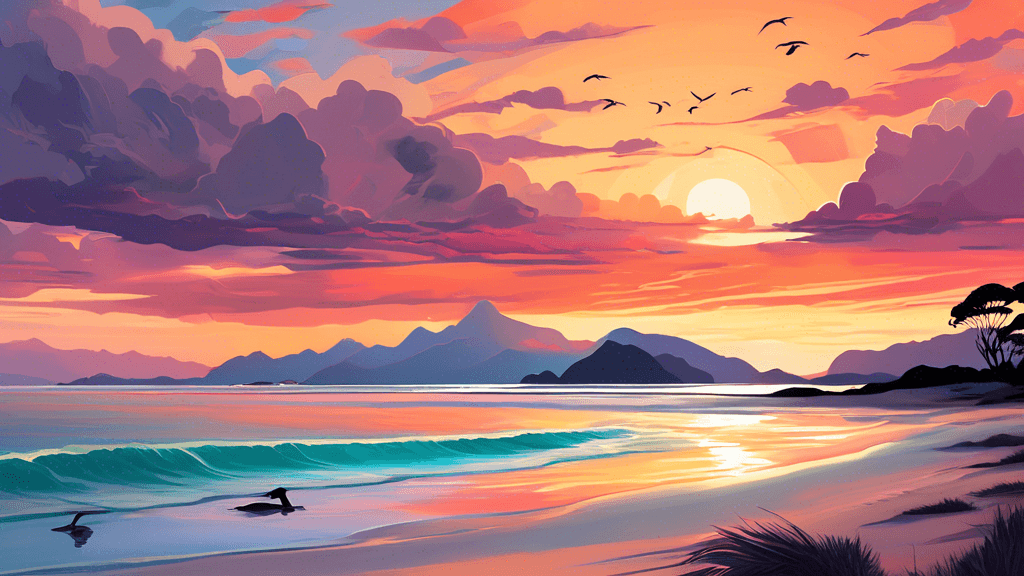
Capturing Calm: Exploring Coastal Photography in Aotearoa
Share
Introduction to Coastal Photography in Aotearoa
Imagine standing at the edge of the world, where the expansive sky meets the restless ocean in a dance of blues and grays. This is the scene at many of Aotearoa New Zealand's breathtaking coastlines, an unparalleled paradise for photographers. Coastal photography in Aotearoa is not just about capturing serene landscapes; it is a profound narrative of conservation, culture, and the intricate dance of natural elements. But what makes coastal photography in this part of the world truly unique, and how can photographers, both amateur and professional, best capture its tranquil beauty?
Understanding the Unique Coastal Environment of Aotearoa
Aotearoa's coastlines are a diverse tapestry of ecosystems, featuring everything from rugged cliffs and towering dunes to serene harbors and sweeping beaches. Each site offers a distinct set of characteristics—light, wildlife, vegetation, and weather patterns—that collectively contribute to the mood and tone of photographs.
1. Light and Time of Day
The quality of light in coastal Aotearoa can vary dramatically throughout the day. Dawn often brings soft, diffused light which enhances textures and colors, while dusk can introduce a warm, golden glow known as the golden hour, prized by photographers for its dramatic effects.
2. Tidal Influences
The tides play a crucial role in coastal photography. Low tides reveal intricate patterns in the sand and rock pools teeming with marine life, offering a glimpse into the often-hidden biodiversity of the coast. High tides, meanwhile, bring dynamic waves crashing against rocks, creating powerful action shots.
3. Weather Patterns
Aotearoa's weather can be unpredictable, with sudden changes that can dramatically affect the mood of your photographs. Capturing storms rolling in from the sea can result in compelling, moody images with powerful natural drama.
Techniques for Capturing the Essence of Coastal Aotearoa
Understanding the environment is one thing, but capturing its essence through a lens is another. Here are some techniques and considerations for anyone aiming to photograph Aotearoa’s coastlines:
Compositional Elements
Good composition is key to creating engaging coastal photographs. Use techniques such as the rule of thirds to place interest points in your images. Leading lines, such as those in driftwood or shorelines, can guide the viewer’s eye through the scene. Moreover, the inclusion of objects like rocks or native plants in the foreground can add depth and context to the shot.
Long Exposure Photography
Long exposure is a popular technique in coastal photography that involves using a slow shutter speed to create a motion blur effect on moving water or clouds. This technique can convey a sense of peace and timelessness, perfect for capturing the tranquil essence of the coast.
Protecting the Natural Environment
While engaging in coastal photography, it's crucial to act with mindfulness toward environmental conservation. Stick to established paths and viewpoints to minimize disruption to native plants and wildlife. The principle of leave no trace should be at the forefront of every photographer's mind.
Conservation through the Camera Lens
Photography does more than just capture beauty; it can be a powerful tool for conservation. Images of Aotearoa's coasts can help raise awareness about the necessity to protect these fragile ecosystems from threats like pollution and climate change. Renowned conservation photographer, James Frank, once said, Each photograph is a story captured in a single moment. A good conservation photograph speaks to the soul, pleading for reflection and action.
Conclusion and Call to Action
Coastal photography in Aotearoa offers more than just stunning landscapes and wildlife sightings; it provides a medium through which we can connect to and protect our natural world. As we explore these magical shorelines through our lenses, let us remember our responsibility to safeguard these treasures. Take your camera and your passion for the environment, and share the stories that need telling. Are you ready to explore the coast through your lens and, in the process, help protect it for future generations?





